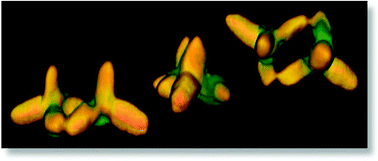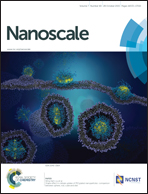Colloidal ZnO and Zn1−xCoxO tetrapod nanocrystals with tunable arm lengths†
Abstract
Tetrapod-shaped ZnO nanocrystals exhibit exceptional optoelectronic properties, including intense ultraviolet photoluminescence emission, that make them attractive for applications that include lasers, sensors, and photocatalysts. However, synthetic methods that produce ZnO tetrapods typically include high-temperature vapor-deposition approaches that do not readily achieve characteristic dimensions of less than 100 nm or colloidal methods that require added metal dopants, which modify the inherent properties of ZnO. Here, we report a robust, modified solution-phase synthetic protocol for generating colloidal ZnO tetrapods that does not require the use of metal dopants. The ZnO tetrapod arm lengths can be tuned from 10 to 25 nm by adjusting the amount of Zn reagent used in the reaction. Subsequent seeded-growth produced even larger colloidal ZnO tetrapods with 62 nm arms. Photoluminescence (PL) measurements confirm that the tetrapods are of high crystalline quality, and the ultraviolet PL emission wavelengths that are observed fall between those of previously reported metal-doped colloidal ZnO tetrapods, which exhibit dopant-induced red- or blue-shifts. Furthermore, the reaction strategy can be modified to produce cobalt-substituted ZnO, offering a chemical pathway to tetrapod-shaped Zn1−xCoxO nanocrystals.


 Please wait while we load your content...
Please wait while we load your content...